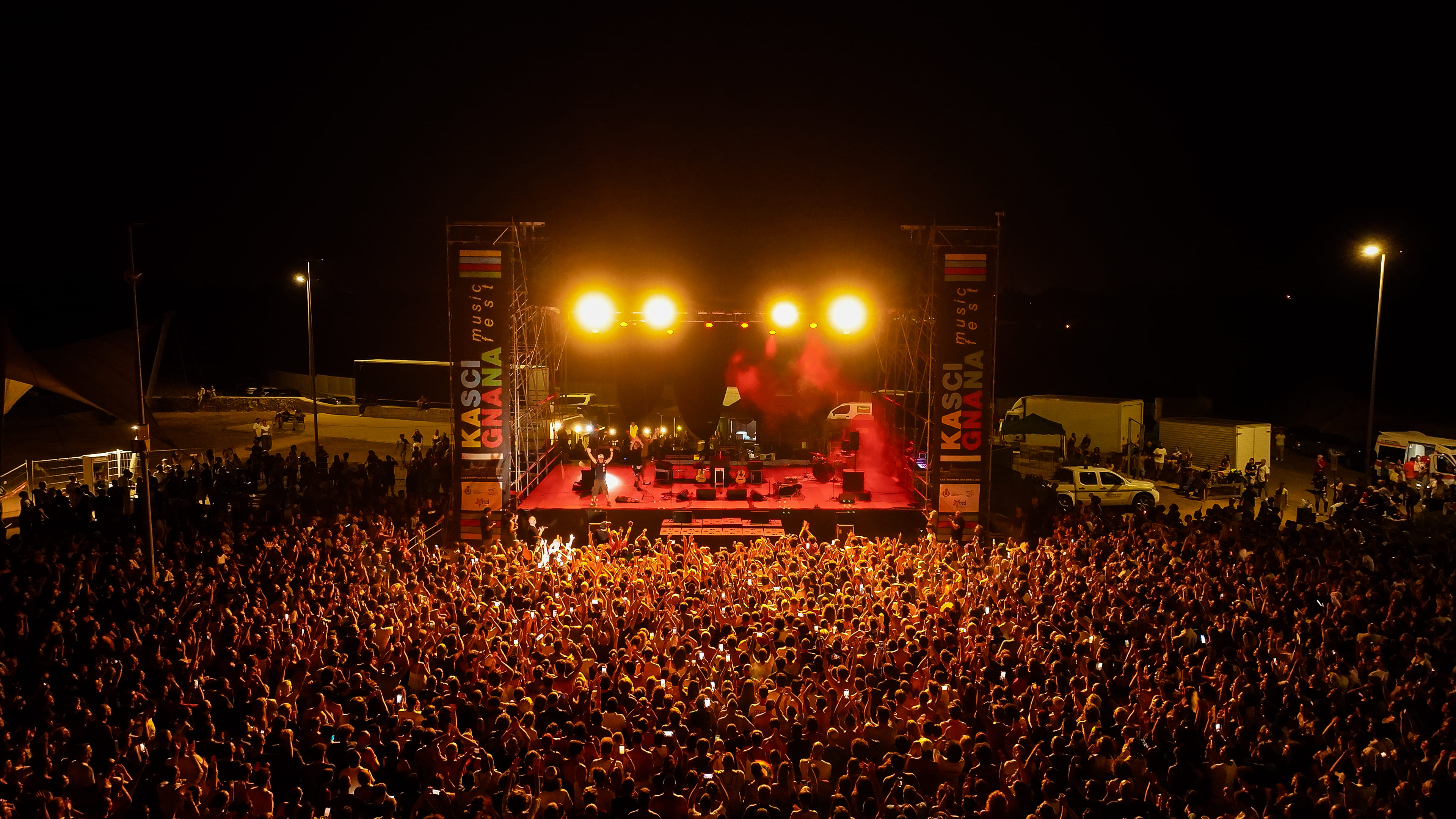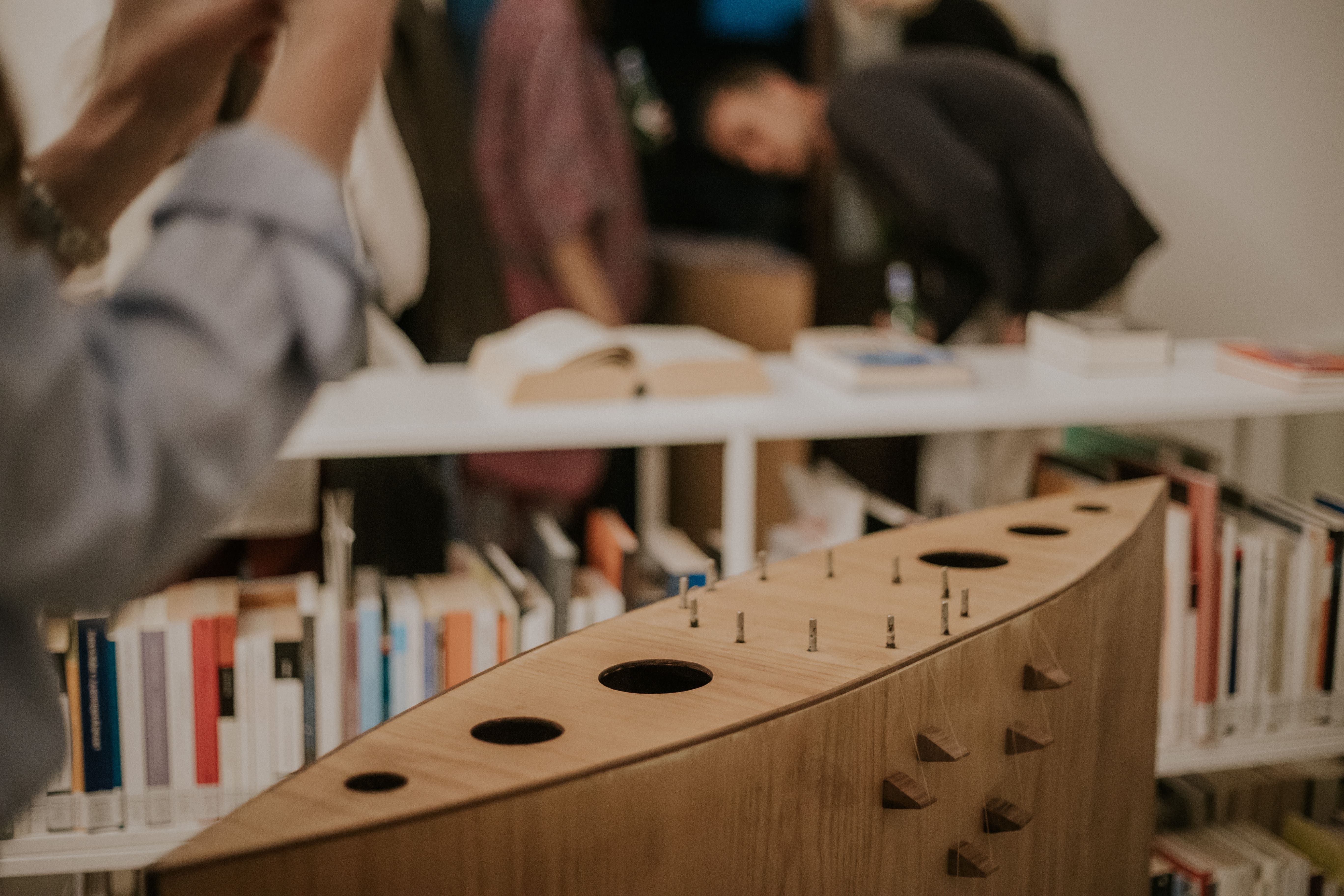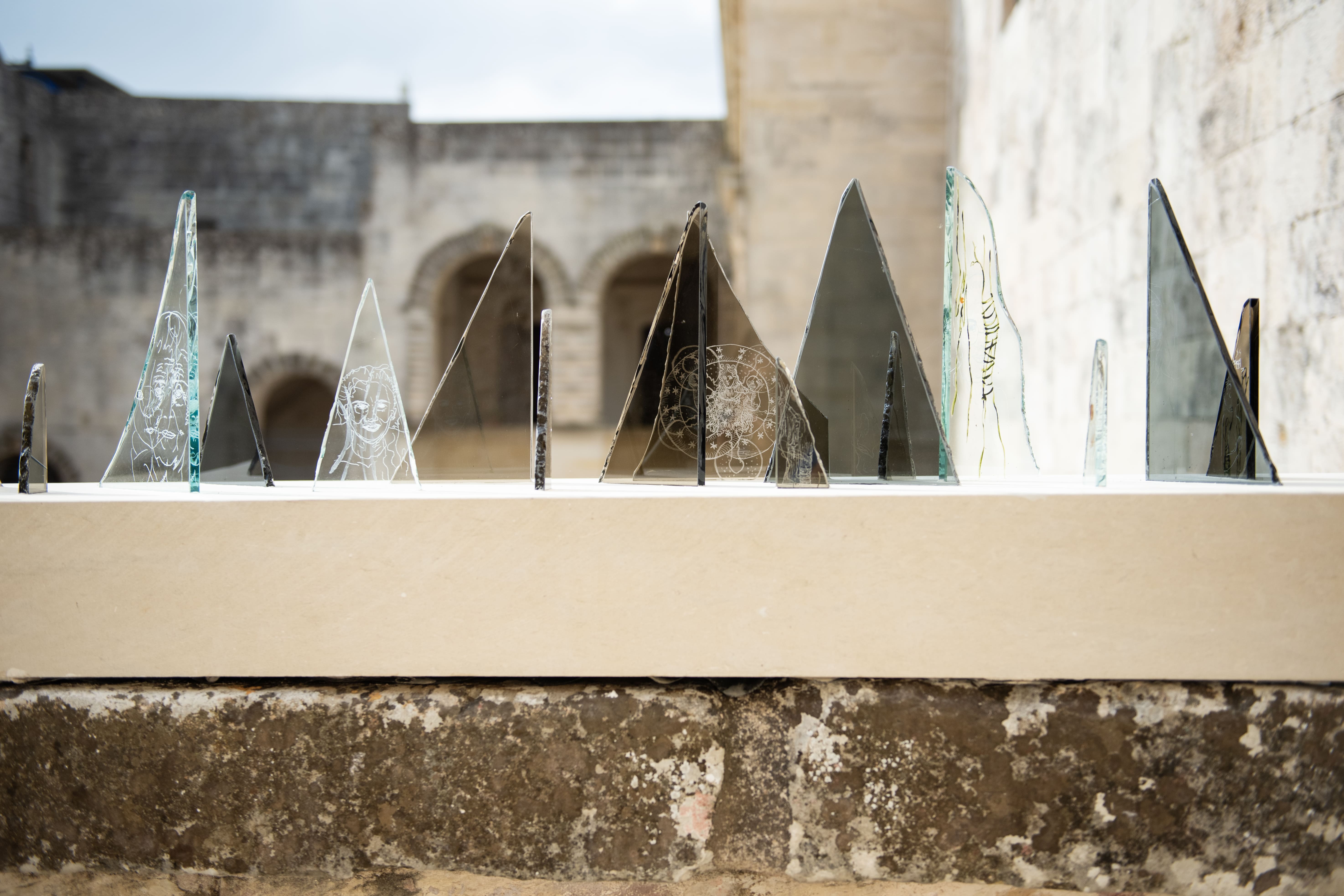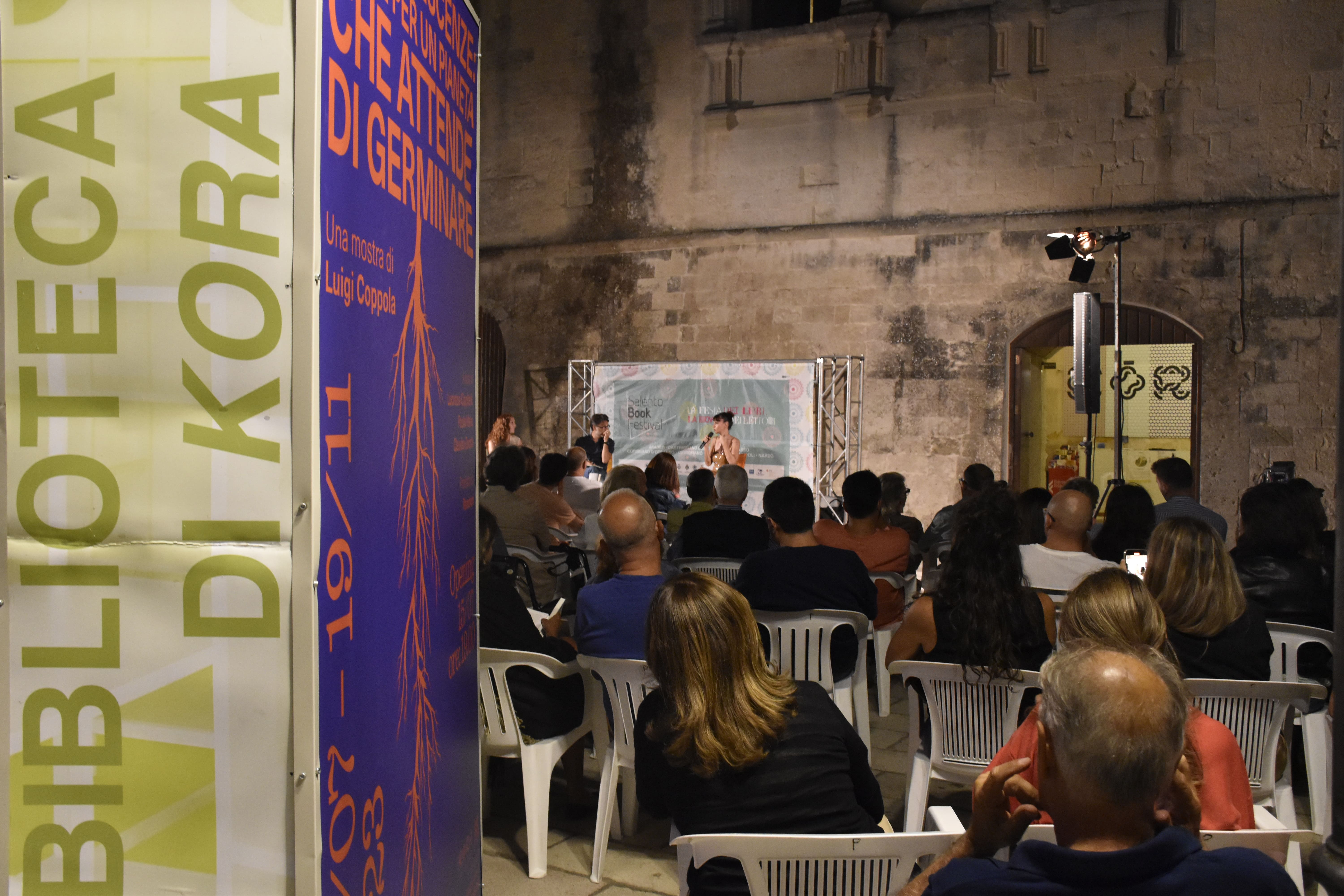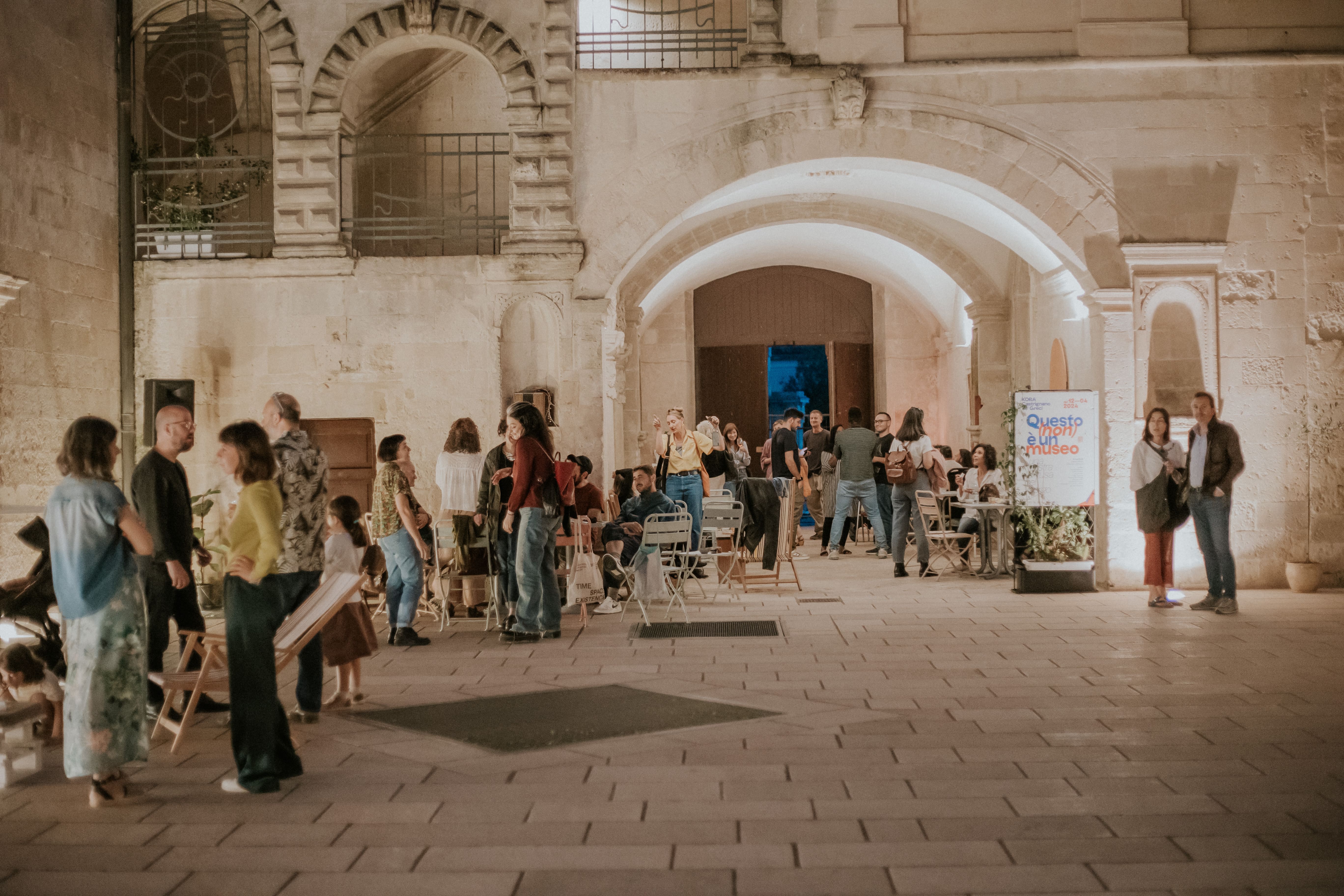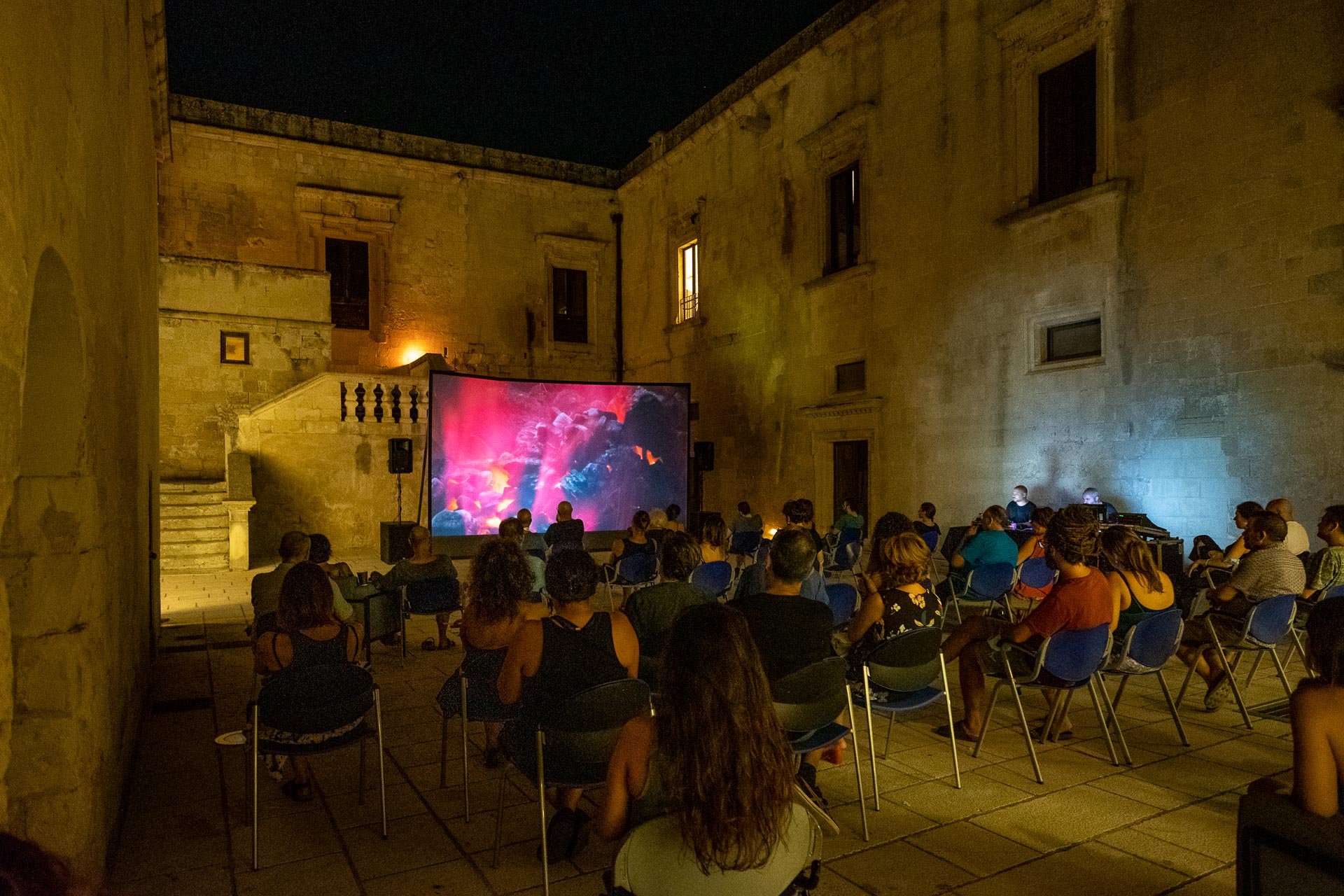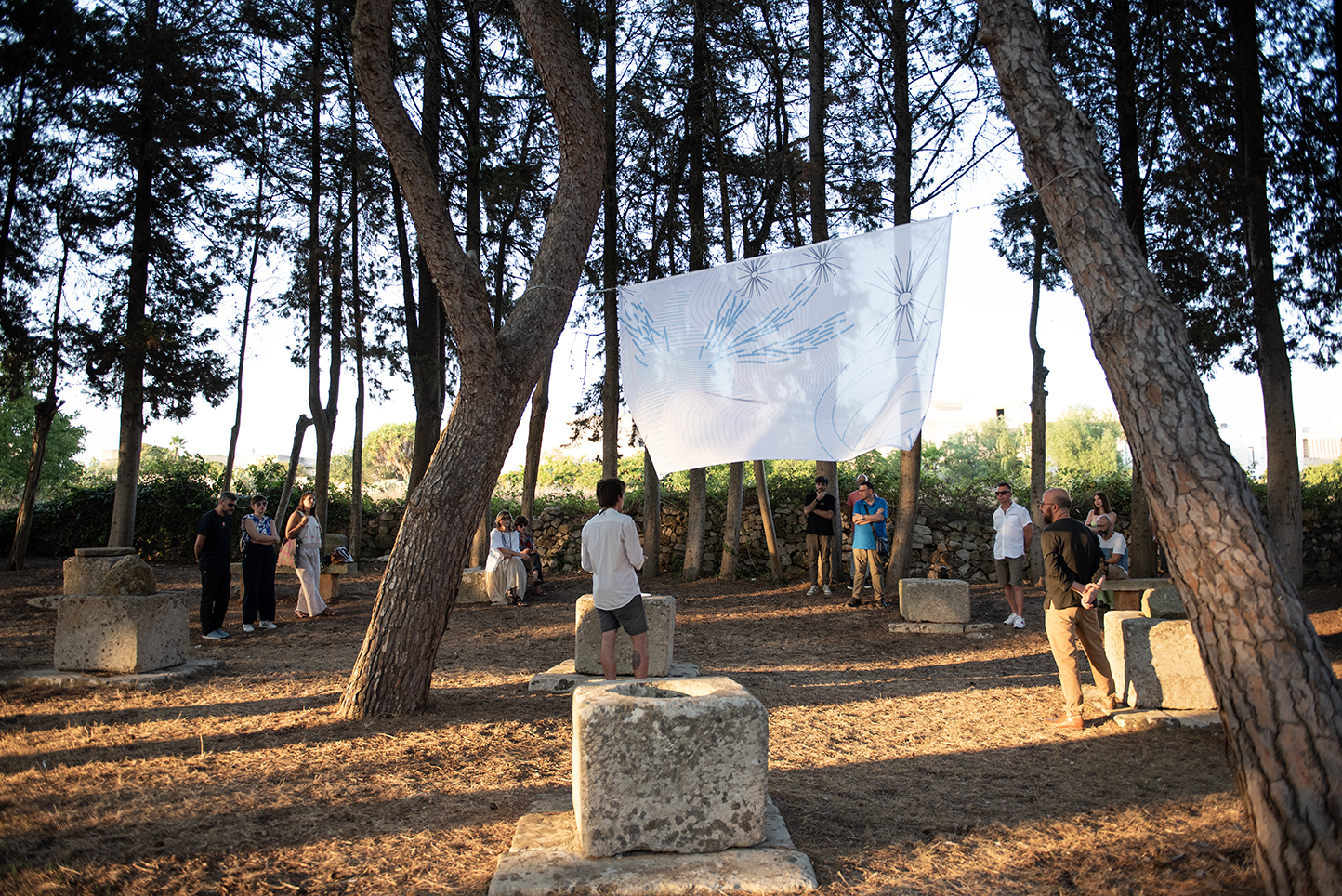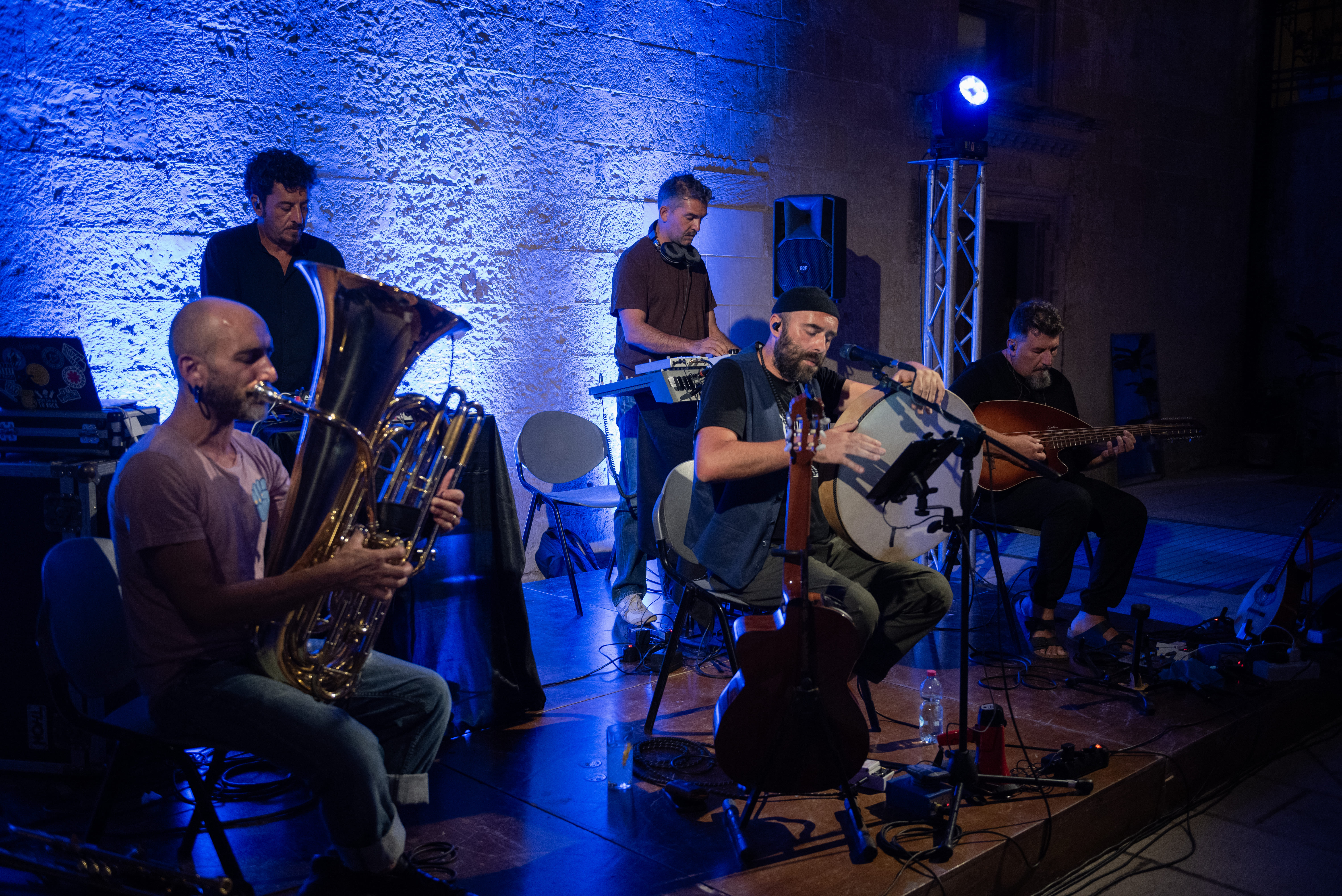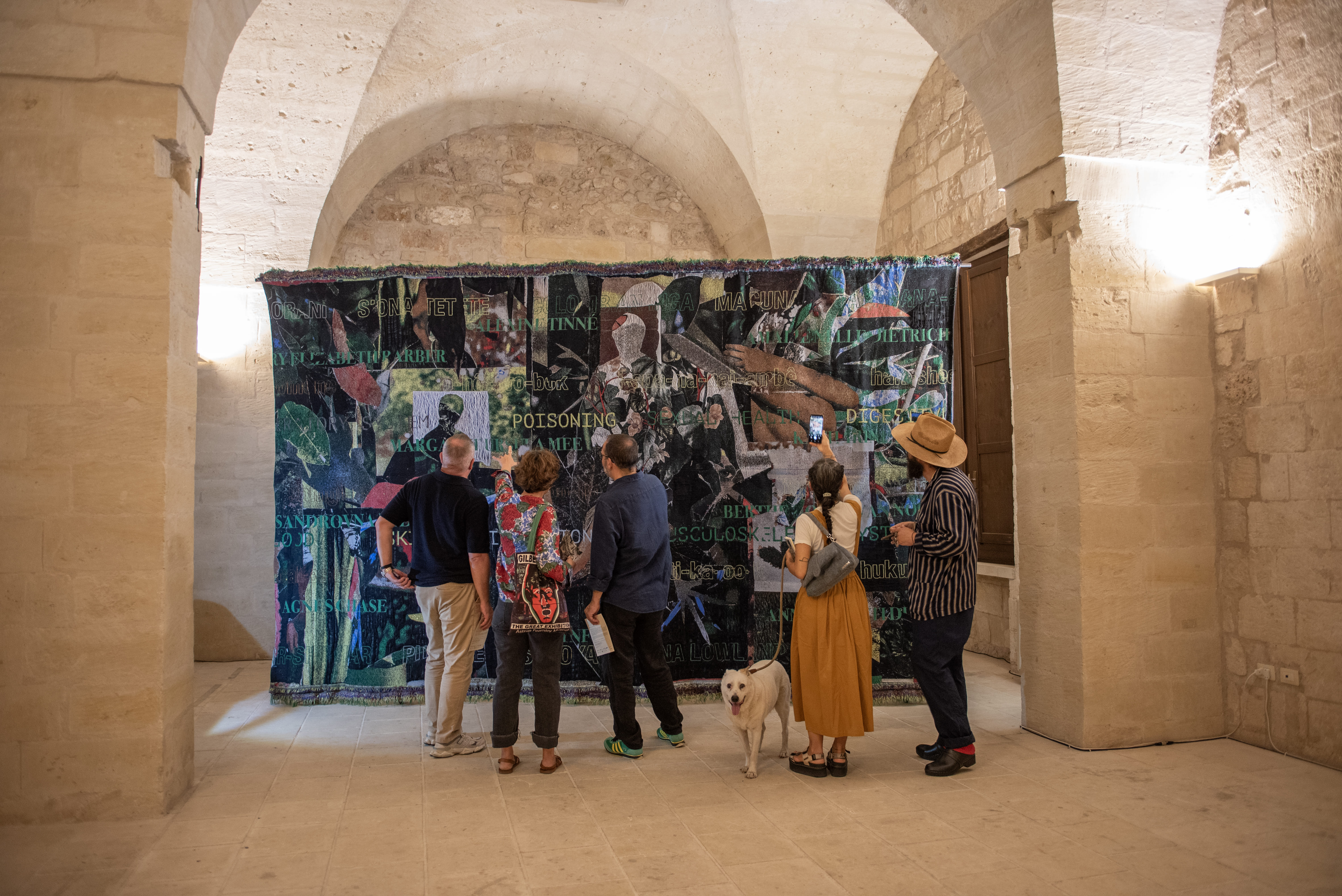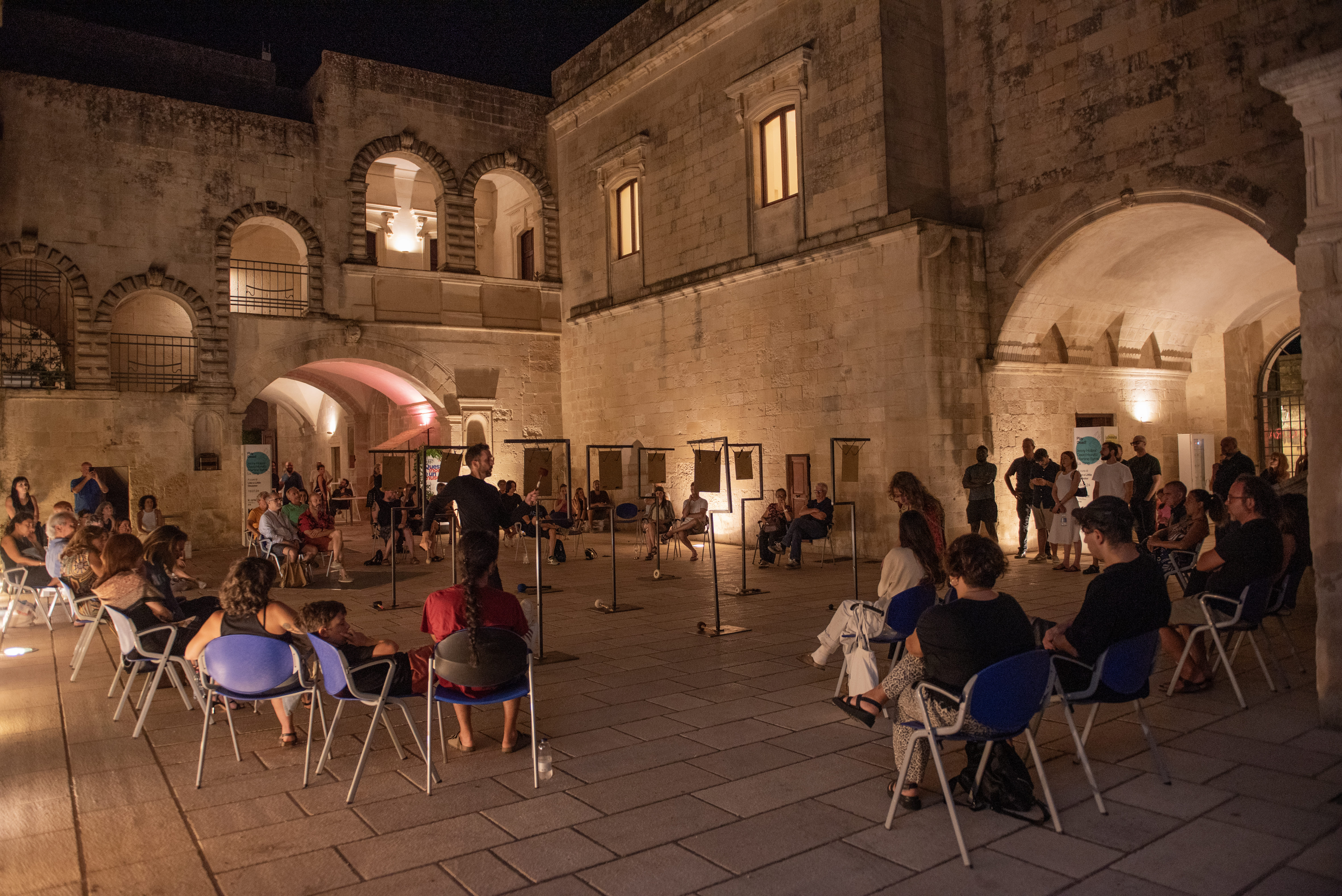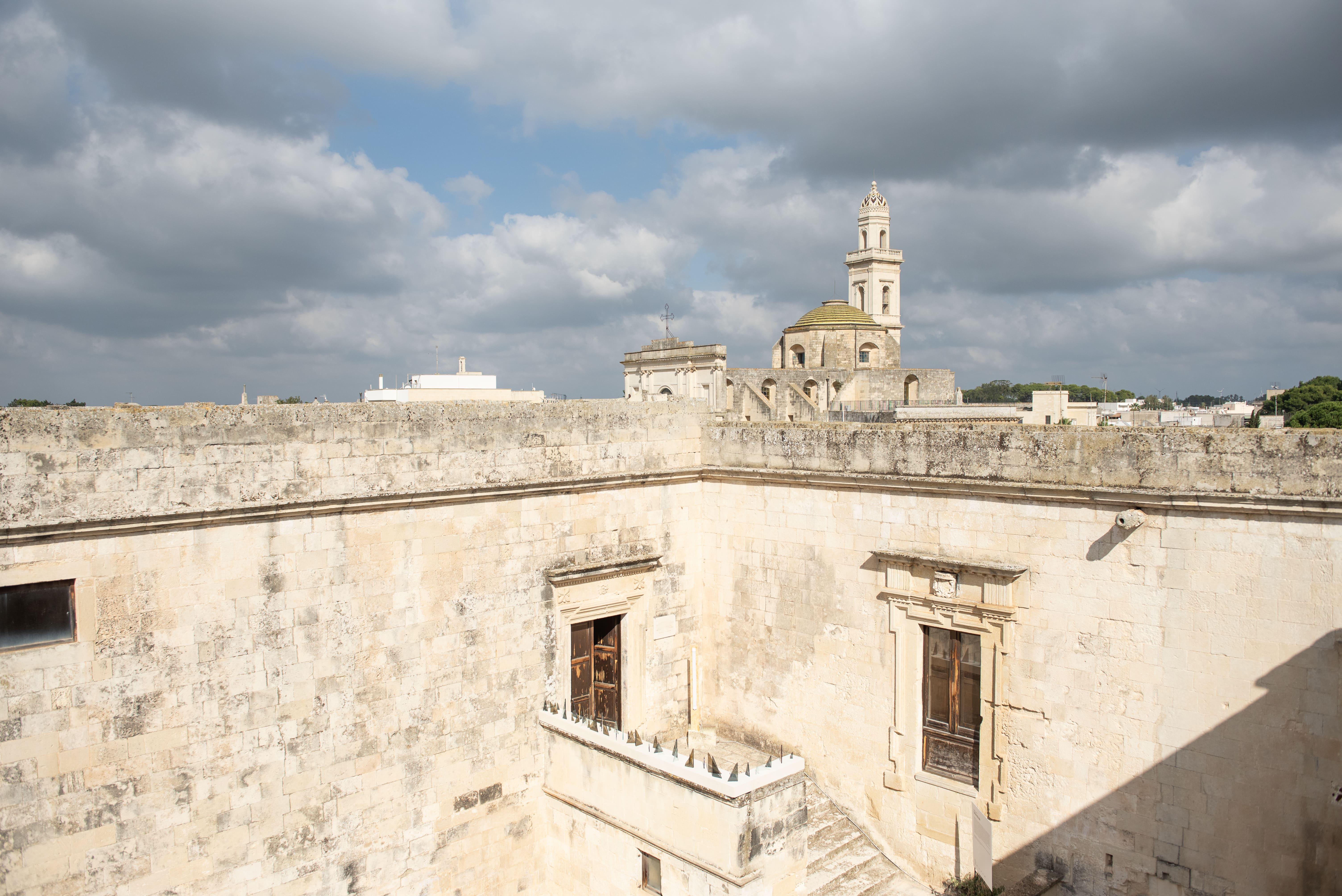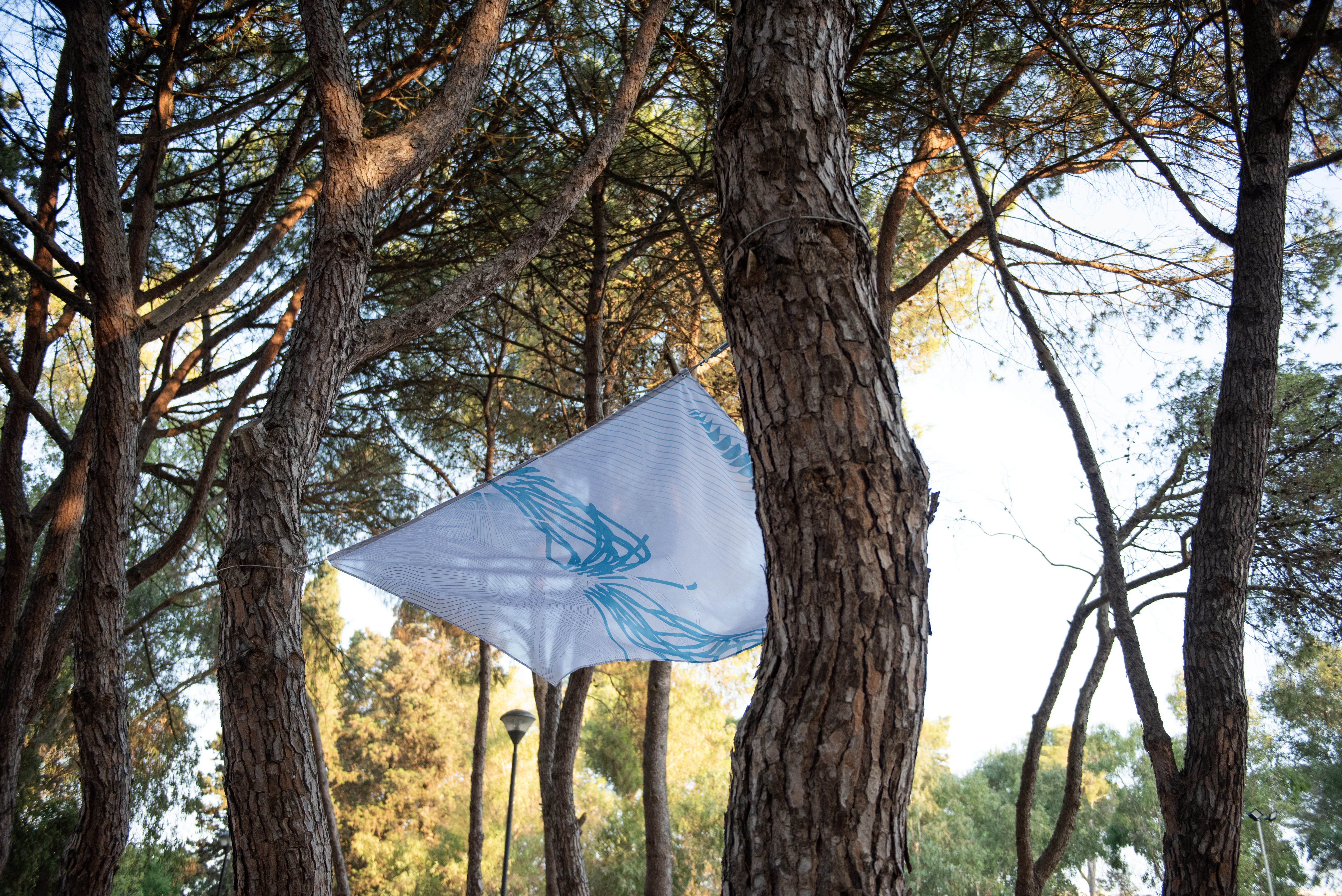Il Borgo del Contemporaneo
Il Borgo del Contemporaneo (Contemporary Village) - Cultural and Social Regeneration
The project Il Borgo del Contemporaneo aims to build a new identity for a small town in Southern Italy, starting from the exaltation of the concept of marginality as a direct experience of the place and questioning the notion of center, and focuses on culture as a central factor in the process of building the Borgo del Contemporaneo according to two assets: as a lever for territorial development on the one hand, and as a facilitator of social cohesion on the other.
Italy
Kora - Contemporary Arts Center
Palazzo Baronale De Gualtieris
Via Vittorio Emanuele, 19
73020 Castrignano de’ Greci, Puglia, Italy
Palazzo Baronale De Gualtieris
Via Vittorio Emanuele, 19
73020 Castrignano de’ Greci, Puglia, Italy
Prototype level
Yes
Yes
Yes
Yes
PNRR
No
075018: Castrignano de' Greci (IT)
The aim of the project is to generate a local economy valorising its cultural and environmental characteristics and its people, with a participatory model, co-design and the following lines of intervention: creating two spaces, one dedicated to the recovery of ancient crafts through training and one dedicated to arts and cultural benefits (Kora - Palazzo Baronale de Gualtieriis). The project will contribute to the social, economical and environmental wellbeing of both its local communities and its temporary habitants.
Our strategy focuses on culture as a lever for territorial development and social cohesion with transversal assets, such as digitalisation and environmental sustainability; active involvement of the community, in all its components.
The specific objectives of the project are: promoting culture and contemporary arts; contributing to the tourism sector; promoting the Grika traditions (neo-Greek dialect called griko); contributing to the cultural welfare while also mapping the territory.
All the action points (detailed later):
1 Kora - Our time is now
2 Tenne. The School of Crafts
3 I óra mas eínai tóra
4 The village is a community map
5 If you want to be universal, Talk about your village
6 Kascignana365
7 Tenne. The School of Contemporary Crafts
8 Step up your game
9 All’opera.
10 Ecothinking
11 Hospitality - Infopoint
12 Hospitality - Diffused hotel
13 Where is my Bike
14 Every house is a village. Artistic Residency Program
15 Kumùna. Social Innovation Hub
16 Communicating the contemporary
17 Communication & Promotion Campaign
18 Hosting Powers. Network of Residencies
We expect reversing trends in some of the macro phenomena that produce devastating effects on the social, entrepreneurial and citizen fabric of the village, such as urbanisation, the increase in the unemployment rate of the most disadvantaged segments of the population, especially young people, the gender wage gap, the marginalisation of migrants.
Our strategy focuses on culture as a lever for territorial development and social cohesion with transversal assets, such as digitalisation and environmental sustainability; active involvement of the community, in all its components.
The specific objectives of the project are: promoting culture and contemporary arts; contributing to the tourism sector; promoting the Grika traditions (neo-Greek dialect called griko); contributing to the cultural welfare while also mapping the territory.
All the action points (detailed later):
1 Kora - Our time is now
2 Tenne. The School of Crafts
3 I óra mas eínai tóra
4 The village is a community map
5 If you want to be universal, Talk about your village
6 Kascignana365
7 Tenne. The School of Contemporary Crafts
8 Step up your game
9 All’opera.
10 Ecothinking
11 Hospitality - Infopoint
12 Hospitality - Diffused hotel
13 Where is my Bike
14 Every house is a village. Artistic Residency Program
15 Kumùna. Social Innovation Hub
16 Communicating the contemporary
17 Communication & Promotion Campaign
18 Hosting Powers. Network of Residencies
We expect reversing trends in some of the macro phenomena that produce devastating effects on the social, entrepreneurial and citizen fabric of the village, such as urbanisation, the increase in the unemployment rate of the most disadvantaged segments of the population, especially young people, the gender wage gap, the marginalisation of migrants.
Welfare
Contemporary arts
Sustainability
Inclusion
Engagement
Environmental sustainability is one of the transversal assets identified by the project strategy. The intervention “Ecothinking” offers activities, such as training with environmental education experts to raise awareness on the impact of human activities on the environment and the drafting and distribution of a handbook of good practices. Furthermore, the action plan foresees a supply of sustainable compost for the “health gardens”: a training on how and what to compost, what are the advantages, how to educate children about environmental sustainability, the importance of cultivating native and diverse plants promoting biodiversity, raising awareness on the issues of waste reduction, etc. Experts will help in putting in practice the tricks and support the implementation of the green solutions.
Another intervention is “Where is my bike”, which promotes green mobility: Creation of a bike and e-bike rental shop, an associated social bike workshop, bike repair point and various bike points and electric bike charging stations scattered around the village and along the surrounding cycling routes.
An action plan, which has already reached a good mature level, is making the supply chain of KORA - Contemporary Arts Center as green as possible. KORA is an important player in the project, it is responsible for the areas of arts, literature, music and theatre. The eco-conscious approach has a particular reference to set-ups and furnishings, through experimentation and research for the development of better preservation, reuse, recovery, eco-design and regeneration techniques of furnishing objects, accessories.
Our project is exemplary in the sustainability aspect, as it focuses on also a less discussed area, where people can make significant changes with an eco-conscious approach: green practices for cultural organisations and professionals, elaboration of an eco-rating for them and the creation of an “EcoFesta” model (a toolkit) for cultural events.
Another intervention is “Where is my bike”, which promotes green mobility: Creation of a bike and e-bike rental shop, an associated social bike workshop, bike repair point and various bike points and electric bike charging stations scattered around the village and along the surrounding cycling routes.
An action plan, which has already reached a good mature level, is making the supply chain of KORA - Contemporary Arts Center as green as possible. KORA is an important player in the project, it is responsible for the areas of arts, literature, music and theatre. The eco-conscious approach has a particular reference to set-ups and furnishings, through experimentation and research for the development of better preservation, reuse, recovery, eco-design and regeneration techniques of furnishing objects, accessories.
Our project is exemplary in the sustainability aspect, as it focuses on also a less discussed area, where people can make significant changes with an eco-conscious approach: green practices for cultural organisations and professionals, elaboration of an eco-rating for them and the creation of an “EcoFesta” model (a toolkit) for cultural events.
Castrignano de’ Greci is both its history, strongly linked to the Hellenic traditions in relation to the Mediterranean, and its present, welcoming all the challenges of contemporaneity.
The project was designed with the objective to foster in its inhabitants the sense of belonging; to strengthen positive emotions, to valorise cultural and social values and to tell and promote them through a new narrative.
The entire village is the object of the process of cultural and social regeneration with two reference points identified in KORA - Contemporary Arts Center in a baronial palace for cultural production and fruition and in the former elementary school “Don Gnocchi” for training, workshops and educational events offering meaningful experiences.
The project envisages territorial development from a cultural point of view and acts as a facilitator of social cohesion nurturing cultural benefits. With reference to social cohesion, the planned activities aim to improve the quality of life of the population through cultural welfare actions, involving a heterogeneous target of subjects.
The exhibitions of “If you want to be universal, Paint your village”, consist of a four-year program (2022-2026) that aims to develop a medium-term research on the theme of living. The program is divided into two chapters: the Village, understood as an open village, and the Mediterranean understood instead as a bridge through which to look to the East. Local, national and international artists from the great masters to the younger ones create artworks to be exposed throughout the entire village. This gives the exceptional aesthetic element of the project, that is the experience of the local people seeing these artworks in places, which are dedicated to art or places that are part of the daily life or abandoned ones to be rediscovered.
The project was designed with the objective to foster in its inhabitants the sense of belonging; to strengthen positive emotions, to valorise cultural and social values and to tell and promote them through a new narrative.
The entire village is the object of the process of cultural and social regeneration with two reference points identified in KORA - Contemporary Arts Center in a baronial palace for cultural production and fruition and in the former elementary school “Don Gnocchi” for training, workshops and educational events offering meaningful experiences.
The project envisages territorial development from a cultural point of view and acts as a facilitator of social cohesion nurturing cultural benefits. With reference to social cohesion, the planned activities aim to improve the quality of life of the population through cultural welfare actions, involving a heterogeneous target of subjects.
The exhibitions of “If you want to be universal, Paint your village”, consist of a four-year program (2022-2026) that aims to develop a medium-term research on the theme of living. The program is divided into two chapters: the Village, understood as an open village, and the Mediterranean understood instead as a bridge through which to look to the East. Local, national and international artists from the great masters to the younger ones create artworks to be exposed throughout the entire village. This gives the exceptional aesthetic element of the project, that is the experience of the local people seeing these artworks in places, which are dedicated to art or places that are part of the daily life or abandoned ones to be rediscovered.
The project aims to contribute to the social, economical and environmental wellbeing of all of
its habitants, the temporary ones too. The current social issues and statistical data revealed which are the most vulnerable or shrinking groups of our local communities, that helped us to design our project as supportive, accessible and affordable as it can be. For the project the reflection started from the historical origins of the village which, paradoxically, defines its most contemporary aspects, of openness and hospitality, delivering the village to an intercultural and cosmopolitan dimension celebrating diversity.
An analysis showed the processes of aging and progressive isolation of the elderly population, impoverishment and abandonment of young people due to job instability, and educational poverty. The Municipality, as an inclusive governing system, created the action plan with the intention to contribute to these challenges by calling the community and the different categories of stakeholders to actively interact at the different levels and in the different interventions of the project.
Events are free for everyone and are designed in a way to reach all, celebrating the linguistic diversity as well with programs, such as Mamma lingua, which is aimed at families with children aged 0-6 years of the largest foreign communities in our country, promoting awareness of the importance of shared reading in the family in the mother tongue.
Asylum seeking temporary members of the community had the possibility to work during the implementation of workshops, exhibition set-ups, cultural events at KORA - one of the main locations of the interventions - and participated in the events themselves, which fostered their sense of belonging and engagement in the village’s life.
its habitants, the temporary ones too. The current social issues and statistical data revealed which are the most vulnerable or shrinking groups of our local communities, that helped us to design our project as supportive, accessible and affordable as it can be. For the project the reflection started from the historical origins of the village which, paradoxically, defines its most contemporary aspects, of openness and hospitality, delivering the village to an intercultural and cosmopolitan dimension celebrating diversity.
An analysis showed the processes of aging and progressive isolation of the elderly population, impoverishment and abandonment of young people due to job instability, and educational poverty. The Municipality, as an inclusive governing system, created the action plan with the intention to contribute to these challenges by calling the community and the different categories of stakeholders to actively interact at the different levels and in the different interventions of the project.
Events are free for everyone and are designed in a way to reach all, celebrating the linguistic diversity as well with programs, such as Mamma lingua, which is aimed at families with children aged 0-6 years of the largest foreign communities in our country, promoting awareness of the importance of shared reading in the family in the mother tongue.
Asylum seeking temporary members of the community had the possibility to work during the implementation of workshops, exhibition set-ups, cultural events at KORA - one of the main locations of the interventions - and participated in the events themselves, which fostered their sense of belonging and engagement in the village’s life.
Two initiatives stand out the most in terms of participation:
1) Building a participation ecosystem for over 50s (especially widows/widowers) focused on the care of the cultural heritage of Castrignano dei Greci. The activity consists in the co-design of 15 cultural-tourist itineraries based on the needs and ambitions that have emerged after the mapping of the village.
2) Promoting intergenerational exchanges. Training for young professionals of reusing some ancient professions, increasingly at risk of disappearing, in the world of contemporary culture: carpentry, ceramics, photography, weaving and embroidery.
There is a need to protect and enhance the cultural, historical, material and immaterial heritage of the territory, (starting from the historical Palazzo De Gualtieriis, Parco Pozzelle, the historic center, Byzantine crypt), which serves as lever that allows to activate the interventions of refunctionalisation of cultural infrastructures to increase in collective participation.
Our objective is to generate a real hub of knowledge and research fostering interaction between cultural professionals and the local community. Knowing how to define one's own cultural, historical, social identity and knowing how to recognize one's own values, skills and potential trigger a development of individual and collective consciousness capable of continuing spontaneously even after the temporal term of the project.
Through population participation processes, already underway, the aim is to understand the needs in a transversal direction, with particular attention to the most fragile. An active involvement that favors the aggregation and active citizenship of permanent and temporary citizens, each for their role, making them protagonists of the development of the village. This active cultural participation and the creation of new networks are therefore proposed as the keystone for a substantial leap forward for the community of Castrignano De’ Greci.
1) Building a participation ecosystem for over 50s (especially widows/widowers) focused on the care of the cultural heritage of Castrignano dei Greci. The activity consists in the co-design of 15 cultural-tourist itineraries based on the needs and ambitions that have emerged after the mapping of the village.
2) Promoting intergenerational exchanges. Training for young professionals of reusing some ancient professions, increasingly at risk of disappearing, in the world of contemporary culture: carpentry, ceramics, photography, weaving and embroidery.
There is a need to protect and enhance the cultural, historical, material and immaterial heritage of the territory, (starting from the historical Palazzo De Gualtieriis, Parco Pozzelle, the historic center, Byzantine crypt), which serves as lever that allows to activate the interventions of refunctionalisation of cultural infrastructures to increase in collective participation.
Our objective is to generate a real hub of knowledge and research fostering interaction between cultural professionals and the local community. Knowing how to define one's own cultural, historical, social identity and knowing how to recognize one's own values, skills and potential trigger a development of individual and collective consciousness capable of continuing spontaneously even after the temporal term of the project.
Through population participation processes, already underway, the aim is to understand the needs in a transversal direction, with particular attention to the most fragile. An active involvement that favors the aggregation and active citizenship of permanent and temporary citizens, each for their role, making them protagonists of the development of the village. This active cultural participation and the creation of new networks are therefore proposed as the keystone for a substantial leap forward for the community of Castrignano De’ Greci.
The project was awarded by the PNRR - National Recovery and Resilience Plan, which has the following missions: digitalisation, innovation, competitiveness, culture, green revolution and ecological transition in line with the European guidelines, such as the New European Bauhaus. The multi-level engagement contains collaboration and cooperation also horizontally with cultural professionals, not just vertically with other operators in different scales (local communities, local authorities, national and European scale). The specific objective from this point of view is to unleash creative energies in the territories, free talents, produce a destabilisation of traditional structures, experimenting with new forms of collaboration and cooperation between all the subjects involved, both public and private sharing similar purposes.
If the bigger scale gives us a framework, focusing on the local level, the entrepreneurial fabric of Castrignano de’ Greci gives the content. It includes artisanal and commercial businesses and, recently, cultural businesses. Part of the activities are carried out thanks to the public-private enhancement intervention already implemented by the Municipality in relation to Palazzo de Gualtieriis - KORA Contemporary Arts Center and which relies on 4 public and private entities with proven management reliability and prestigious curricula.
For the enhancement and management of the ex school's services and activities, a process of involvement of the local operators and Third Sector Entities has begun through a co-creation process. The Municipality directly follows the works and the related assignments and tasks.
If the bigger scale gives us a framework, focusing on the local level, the entrepreneurial fabric of Castrignano de’ Greci gives the content. It includes artisanal and commercial businesses and, recently, cultural businesses. Part of the activities are carried out thanks to the public-private enhancement intervention already implemented by the Municipality in relation to Palazzo de Gualtieriis - KORA Contemporary Arts Center and which relies on 4 public and private entities with proven management reliability and prestigious curricula.
For the enhancement and management of the ex school's services and activities, a process of involvement of the local operators and Third Sector Entities has begun through a co-creation process. The Municipality directly follows the works and the related assignments and tasks.
The project has a transdisciplinary approach, it connects cultural heritage, architecture, contemporary arts, literature and education, green businesses, agriculture, tourism, technology, digitalization and craftsmanship. All these fields meet through the action points of the project with the involvement of both the public and private sectors.
In detail, in the artisanal area there are businesses specialised in the production and sale of cement products, in the creation and installation of fixtures, in the processing of marble, stone and porcelain stoneware, in wholesale trade and in artisanal cheese production. The strong entrepreneurial sense in the village has been rooted in the history of this community, and is reflected in the businesses present in the village: mostly entities in the tertiary sector, catering, and public services.
The tradition that links the municipality to the ancient tradition of embroidery and textiles is important, with the presence of an association of embroiderers and an important fabric trading company. Thanks to the process started by the administration aimed at enhancing the cultural assets present and the attractiveness of the village, several important organisations, both third sector and non-third sector, have recently settled there, active at a
national and international level in the sectors of culture, communication and the production of events related to live entertainment.
The participation process promoted by the Municipality has highlighted a series of needs of the local entrepreneurial world: - the need for highly qualified continuous professional training tools and opportunities, especially in the field of food and wine and tourist hospitality; the need to build intersectoral networks capable of positioning themselves better on national and international markets to promote the typical features - both material and immaterial - of the village.
In detail, in the artisanal area there are businesses specialised in the production and sale of cement products, in the creation and installation of fixtures, in the processing of marble, stone and porcelain stoneware, in wholesale trade and in artisanal cheese production. The strong entrepreneurial sense in the village has been rooted in the history of this community, and is reflected in the businesses present in the village: mostly entities in the tertiary sector, catering, and public services.
The tradition that links the municipality to the ancient tradition of embroidery and textiles is important, with the presence of an association of embroiderers and an important fabric trading company. Thanks to the process started by the administration aimed at enhancing the cultural assets present and the attractiveness of the village, several important organisations, both third sector and non-third sector, have recently settled there, active at a
national and international level in the sectors of culture, communication and the production of events related to live entertainment.
The participation process promoted by the Municipality has highlighted a series of needs of the local entrepreneurial world: - the need for highly qualified continuous professional training tools and opportunities, especially in the field of food and wine and tourist hospitality; the need to build intersectoral networks capable of positioning themselves better on national and international markets to promote the typical features - both material and immaterial - of the village.
The entire proposal intends to adopt a strategy that in its complexity challenges the institutionalised definitions of the sectors of the cultural and creative industry to weave new relationships and contaminations between various disciplines and sectors in a perspective of theoretical and practical innovation. The cultural programming acts as a guide in the strategic experimentation in this sense: it creates opportunities and spaces open to interculturality, art, training, aggregation, improving the quality of welfare services and rethinking the tourism and entrepreneurial sector that are capable of actively involving and generating positive impacts for a vast and heterogeneous target of subjects.
The strength of the village is its community. History is understood as a characterising element for the development of the territory through a process of cultural destabilisation and innovation. The proposed activities are based on the recovery of the past and the connections of the present, on the quality artistic offer, to activate actions towards the future through the use of digital, self-entrepreneurship and research so as to increase the attractiveness of the village also in the tourism sector; the information/training moments are designed to generate awareness with respect to the path undertaken.
In accordance with the international objectives for the digital era, particular attention will be paid to the development of skills and the adoption of digital transition tools and processes. We have interventions that aim at digital literacy and the creation of gaming content or the creation of systems for archiving, preserving and cataloging audio-video artistic productions, in progressive advancement in contemporary art. The implementation of innovative digital systems will also be applied through the creation of cultural itineraries accessible not only with traditional methodologies but also with interactive tools and devices.
The strength of the village is its community. History is understood as a characterising element for the development of the territory through a process of cultural destabilisation and innovation. The proposed activities are based on the recovery of the past and the connections of the present, on the quality artistic offer, to activate actions towards the future through the use of digital, self-entrepreneurship and research so as to increase the attractiveness of the village also in the tourism sector; the information/training moments are designed to generate awareness with respect to the path undertaken.
In accordance with the international objectives for the digital era, particular attention will be paid to the development of skills and the adoption of digital transition tools and processes. We have interventions that aim at digital literacy and the creation of gaming content or the creation of systems for archiving, preserving and cataloging audio-video artistic productions, in progressive advancement in contemporary art. The implementation of innovative digital systems will also be applied through the creation of cultural itineraries accessible not only with traditional methodologies but also with interactive tools and devices.
Our approach is to consider culture as a lever for territorial development and social cohesion. We view this through transversal assets: digitalisation and environmental sustainability; active involvement of the community in all its components. We have set the following structure:
Objectives that will be achieved
Functional improvements to the Palazzo Baronale de Gualtieriis and the former Don Gnocchi school
A training school on ancient contemporary crafts (weaving and embroidery, carpentry, ceramics, photography)
Exhibitions and artistic residences of international appeal spread throughout the village;
Cultural and tourist itineraries;
A soft mobility project with bicycles and electric scooters
The strengthening of the Kascignana festival with events throughout the year;
A communication school with numerous activities and meetings;
A project for a widespread hotel;
The strengthening of the infopoint;
A project on environmental sustainability;
A help desk for businesses
In order to implement the 18 action points (written in the summary previously), the Municipality considers it a priority to address the investment together with the communities and stimulate participation through the involvement of citizens and the professional context of the territories. The interventions are based on co-design processes and aimed at a capacity building path supported by excellent professional figures who share projects and strengthen the capabilities of local operators on professional methodologies.
Objectives that will be achieved
Functional improvements to the Palazzo Baronale de Gualtieriis and the former Don Gnocchi school
A training school on ancient contemporary crafts (weaving and embroidery, carpentry, ceramics, photography)
Exhibitions and artistic residences of international appeal spread throughout the village;
Cultural and tourist itineraries;
A soft mobility project with bicycles and electric scooters
The strengthening of the Kascignana festival with events throughout the year;
A communication school with numerous activities and meetings;
A project for a widespread hotel;
The strengthening of the infopoint;
A project on environmental sustainability;
A help desk for businesses
In order to implement the 18 action points (written in the summary previously), the Municipality considers it a priority to address the investment together with the communities and stimulate participation through the involvement of citizens and the professional context of the territories. The interventions are based on co-design processes and aimed at a capacity building path supported by excellent professional figures who share projects and strengthen the capabilities of local operators on professional methodologies.
The diffusion and dissemination of all the activities planned can drive the development of future activities. The project can be transferred to other places in many aspects from participatory models, through inclusion to regeneration and many more. All the action points and the multidisciplinary nature of the project enhances an overall touristic perspective. It can be destined to the deseasonalization of tourist flows and the enhancement of similar rural or internal areas. A good practice for strategic development or methodology, which is not the mere increase in tourist flows, but the construction of experiential routes.
The replicable model promoted by the administration of Castrignano allows for the diversification of the offer, intends to contribute to better distributing tourist flows even outside of the seasonality and to avoid phenomena of over tourism: an experiential tourism based on hospitality and an intense and participatory contact with the local population, the traditions of the place and of course the material and immaterial heritage.
Two specific initiatives stand out from the replicability point of view:
The restoration project of the former “Don Gnocchi” elementary school can serve as a good practice for revitalising and restoring old or out-of-use buildings in other places.
The enhancement of the linguistic minority of Griko can be transferred to any other minority linguistic groups in other communities. This way, other beneficiaries will be able to have a practical guide, a toolkit on how to protect the culture as an intangible heritage to be enhanced in a contemporary way with the specificity of the linguistic element.
The replicable model promoted by the administration of Castrignano allows for the diversification of the offer, intends to contribute to better distributing tourist flows even outside of the seasonality and to avoid phenomena of over tourism: an experiential tourism based on hospitality and an intense and participatory contact with the local population, the traditions of the place and of course the material and immaterial heritage.
Two specific initiatives stand out from the replicability point of view:
The restoration project of the former “Don Gnocchi” elementary school can serve as a good practice for revitalising and restoring old or out-of-use buildings in other places.
The enhancement of the linguistic minority of Griko can be transferred to any other minority linguistic groups in other communities. This way, other beneficiaries will be able to have a practical guide, a toolkit on how to protect the culture as an intangible heritage to be enhanced in a contemporary way with the specificity of the linguistic element.
The project addresses macro phenomena that produce devastating effects on the social, entrepreneurial and citizen fabric of the village, such as the phenomenon of unbridled urbanization (70% of the world's population will live in large cities by 2030), the increase in the unemployment rate of the most disadvantaged segments of the population, especially young people (unemployment rate in the 14-25 age group in Puglia equal to 34.5%, 2020 data source Arti), the gender wage gap, the marginalisation of migrants, the recent catastrophic developments in international relations, the health emergency and climate change.
Furthermore, the project intends to counteract the demographic exodus that is shown in the statistical information on the demographic trend both globally and in the Municipality of Castrignano de’ Greci that young people are constantly decreasing compared to the elderly. The average age in the village is higher than the national average and is approximately 49 years. The objective is to act indirectly by creating improved conditions to make the village attractive and inclusive to new residences of professionals in the cultural, artistic and communication sectors.
Furthermore, the project intends to counteract the demographic exodus that is shown in the statistical information on the demographic trend both globally and in the Municipality of Castrignano de’ Greci that young people are constantly decreasing compared to the elderly. The average age in the village is higher than the national average and is approximately 49 years. The objective is to act indirectly by creating improved conditions to make the village attractive and inclusive to new residences of professionals in the cultural, artistic and communication sectors.
The already developed or shortly will be terminated activities are the followings:
Kora - Our time is now - reconstruction works of the Baronial Palace guaranteeing the adequate spaces for literary and artistic meetings and theatrical visits
Tenne. The School of Contemporary Crafts - reconstruction works of the former Don Gnocchi school works (by April 2025), guaranteeing the location for workshops.
The other actions, in line with the NEB values and working principles, have reached a good maturity level and are continuing to be implemented fully by June 2025 or some by June 2026, as in the Timeline sheet. These are the followings:
The village is a community map - Building a participation ecosystem focused on the cultural heritage of the village.
Paint your own village - Research on the theme of living.
Kascignana365 - A series of events promoting the culture of hospitality with a multi-level engagement (book presentations, conferences, musical performances).
Step up your game - Digital Literacy and Gaming Education
All’opera. - Training for educators, museum workers, librarians, to acquire skills in creating guided tours, laboratories, treasure hunts, storytelling, tactile visits, fostering cultural welfare.
Ecothinking - Training on sustainability and environmental education; the creation of a handbook of good practices.
Hospitality - Infopoint & Diffused hotel - Elaboration of a tourist promotion plan and a creation of a network between all the regular non-hotel facilities.
Where is my Bike - Creation of bike, e-bike rental shop and repair point.
Artistic Residency Program & Network of Residencies - Hosting 3 Senior artists and 3 Junior artists engaging with the local context.
Social Innovation Hub - Realisation of a feasibility study on social and cultural innovation.
Communication & Promotion Campaign
Kora - Our time is now - reconstruction works of the Baronial Palace guaranteeing the adequate spaces for literary and artistic meetings and theatrical visits
Tenne. The School of Contemporary Crafts - reconstruction works of the former Don Gnocchi school works (by April 2025), guaranteeing the location for workshops.
The other actions, in line with the NEB values and working principles, have reached a good maturity level and are continuing to be implemented fully by June 2025 or some by June 2026, as in the Timeline sheet. These are the followings:
The village is a community map - Building a participation ecosystem focused on the cultural heritage of the village.
Paint your own village - Research on the theme of living.
Kascignana365 - A series of events promoting the culture of hospitality with a multi-level engagement (book presentations, conferences, musical performances).
Step up your game - Digital Literacy and Gaming Education
All’opera. - Training for educators, museum workers, librarians, to acquire skills in creating guided tours, laboratories, treasure hunts, storytelling, tactile visits, fostering cultural welfare.
Ecothinking - Training on sustainability and environmental education; the creation of a handbook of good practices.
Hospitality - Infopoint & Diffused hotel - Elaboration of a tourist promotion plan and a creation of a network between all the regular non-hotel facilities.
Where is my Bike - Creation of bike, e-bike rental shop and repair point.
Artistic Residency Program & Network of Residencies - Hosting 3 Senior artists and 3 Junior artists engaging with the local context.
Social Innovation Hub - Realisation of a feasibility study on social and cultural innovation.
Communication & Promotion Campaign

